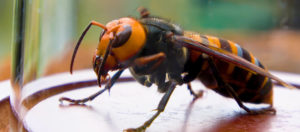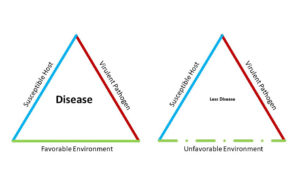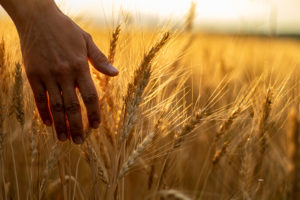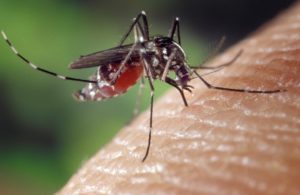Texas A&M AgriLife’s top stories for 2020
From a pandemic to murder hornets, AgriLife united against a challenging year
During a year of uncertainty and unforeseen circumstance, Texas A&M AgriLife personnel rallied together to support each other and, most of all, the people of Texas.
Through science-backed research, AgriLife experts provided insight into navigating the uncharted waters of COVID-19, mystery seeds, murder hornets, feeding future generations, hurricanes and wildfires.
Here are some of the top “attention-getting” stories the general public turned to AgriLife for more information on
Mystery seeds were sent to citizens across the state and nation
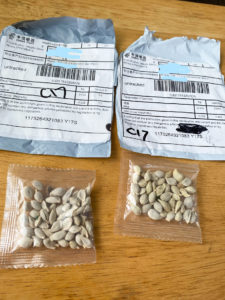
Texas residents were among thousands of people who received unsolicited foreign seed packages marked as jewelry. The mystery seeds raised major concern as they could potentially open our agriculture industry up to noxious weeds, said Kevin Ong, Ph.D., Texas A&M AgriLife Extension Service plant pathologist and director of the Department of Plant Pathology Microbiology’s Texas Plant Disease Diagnostic Laboratory in Bryan-College Station.
Experts recommended cleaning, disinfecting guidelines for household use to combat the coronavirus
There’s a difference in cleaning and disinfecting, and this past year had a major uptick in both. Experts from the Institute for Infectious Animal Diseases broke it down step-by-step for households with and without suspected illness and explained what should take priority when cleaning and disinfecting, along with what to look for in cleaning solutions.
Murder hornets made their way to the U.S., Texas formed a task force to be prepared
The Asian giant hornet may have slipped into the U.S. via cargo container and now threatens American agriculture. Since the hornet uses honey bees as a principal food source and could decimate honey bee populations, a major source of pollination, this would greatly alter agriculture. At the request of Gov. Greg Abbott, a specialized task force led by Texas A&M AgriLife experts spearheaded an initiative to protect Texas citizens, agriculture and honey bees if the murder hornet were to arrive in Texas. Although several insects in the state resemble the Asian giant hornet in color and size, the so-called “murder hornets” have not made it to Texas at this time.
COVID-19 relief was made available for farmers, ranchers
Relief packages were released, and the Agricultural and Food Policy Center at Texas A&M University in Bryan-College Station developed a briefing paper that identified provisions most applicable to agricultural producers in the three Congressional interventions to stimulate the economy and provide COVID-19 relief for both farmers and ranchers.
The ‘disease triangle’ indicated COVID-19 peak wasn’t the end, and it was right
The plant world has offered insight into the COVID-19 pandemic, according to a Texas A&M AgriLife Research virologist and plant pathologist. The disease triangle is not a new theory. It is based off of the fact that an epidemic arises from the interaction of three factors—a susceptible host, a virulent pathogen and a hospitable environment—and to beat it, there must be a disruption in one of these three areas.
Dr. Borlaug’s legacy helps feed the future
In celebration of World Food Day, AgriLife celebrated Norman E. Borlaug, Ph.D., and his ongoing legacy. Through The Borlaug Institute, researchers from Texas A&M AgriLife are sharing their knowledge with communities around the world to better establish agricultural practices that will help sustain families and communities in the future. Setting these communities up for success in agriculture now helps to insure they will be able to feed the future generations to come.
AgriLife researchers sought out causes, transmission of coronavirus in food processing
Keeping a keen eye on animals in the food chain all the way through to consumption, AgriLife researchers aimed to identify the point of exposure to the virus and survivability of the virus on meat packaging in transportation and retail scenarios. The project relied on Texas A&M Veterinary Medical Diagnostic Laboratory’s Biological Safety Level-3, or BSL-3, virus propagation expertise and high-containment facilities.
Firefighters battled 9,500-acre wildfire in San Saba County
Texas A&M Forest Service remained diligent in their efforts to protect the citizens of Texas against wildfire, while also sharing their expertise with other states in need. With such dry conditions through much of the year, the Texas A&M Forest Service urged residents to take precaution with vehicles amongst dry vegetation. Idling a vehicle over tall, dry grass can and will start a wildfire. Taking precaution when outdoors is crucial in preventing wildfires like the Mays Fire in San Saba and McCulloch counties.
Studies suggest human wilderness connection has psychological roots, could reduce disease risk
The study found that people’s attachment to the wilderness can be explained by their basic psychological needs for autonomy, relatedness and competence. With increased stress and isolation due to COVID-19, natural areas and the psychological benefits they provide are needed now more than ever, according to study in the Department of Rangeland, Wildlife and Fisheries Management. Texas A&M Forest Service also launched “Healthy Trees, Healthy Lives” to help promote physical, psychological and social health through wilderness and treescapes.
Mosquito control efforts focus on self-deleting genes
To control mosquito populations and prevent them from transmitting diseases such as malaria, AgriLife researchers are pursuing strategies in mosquito genetic engineering. A new AgriLife Research project aims to enable temporary “test runs” of proposed genetic changes in mosquitoes, after which the changes remove themselves from the mosquitoes’ genetic code.

